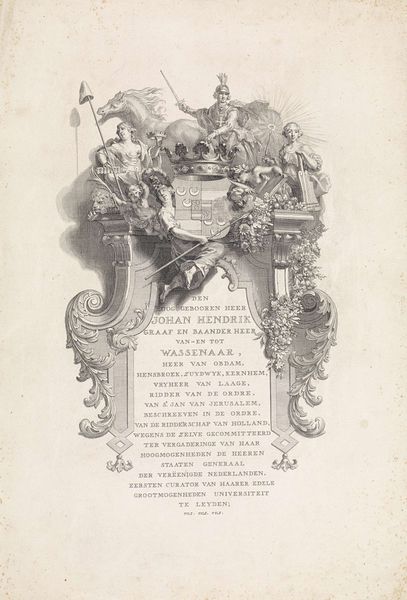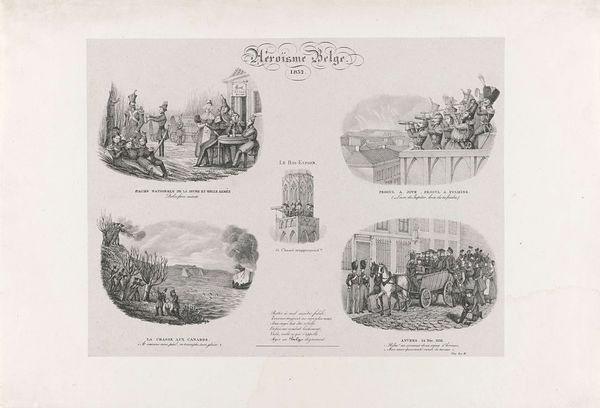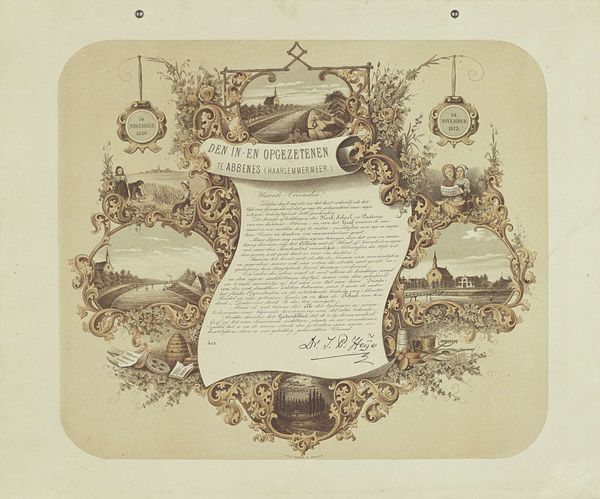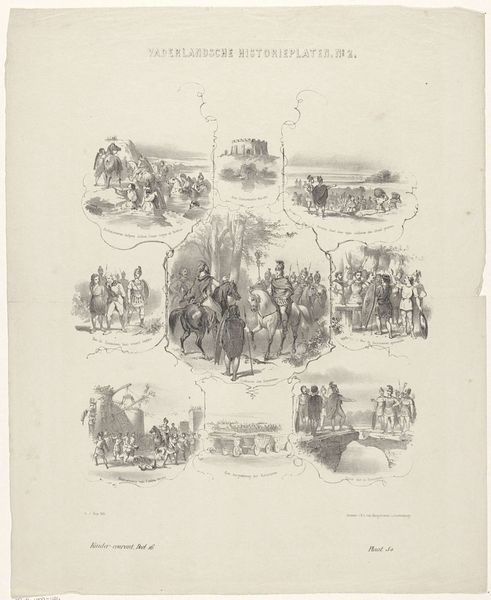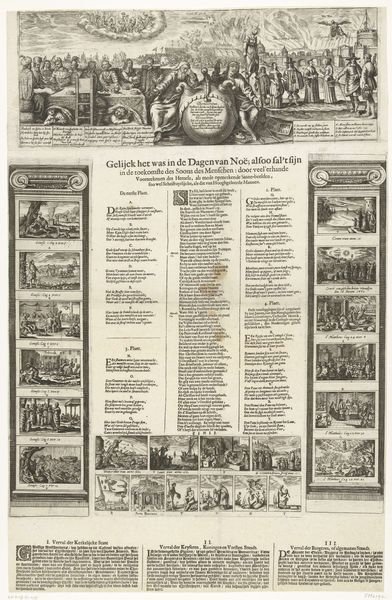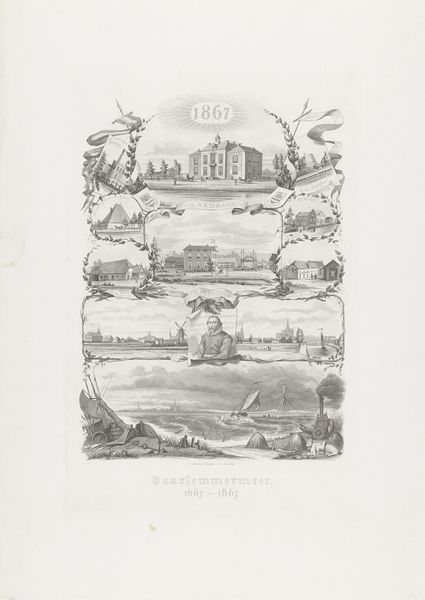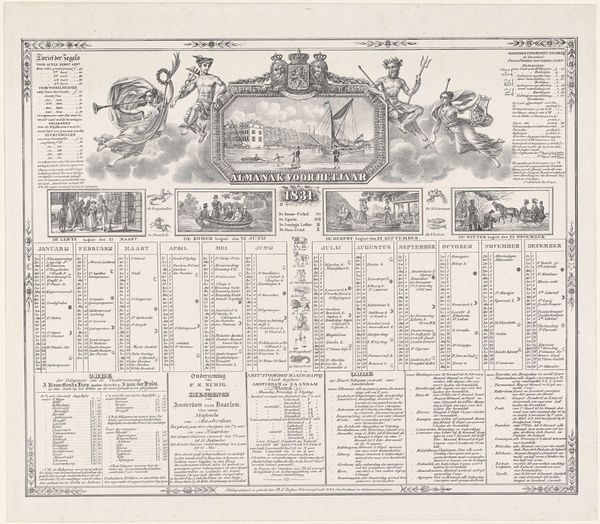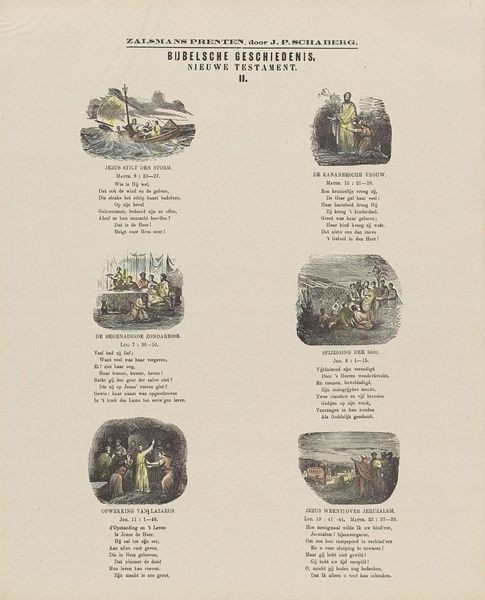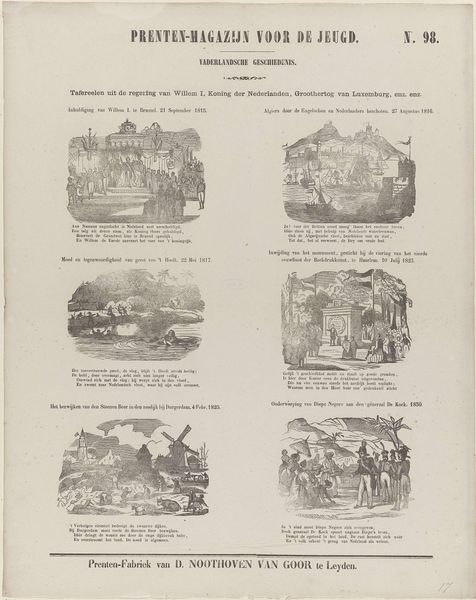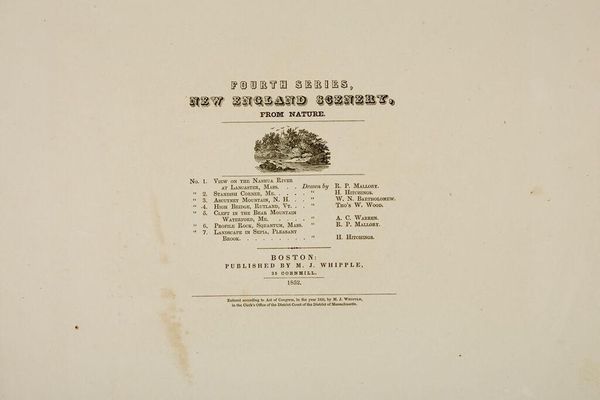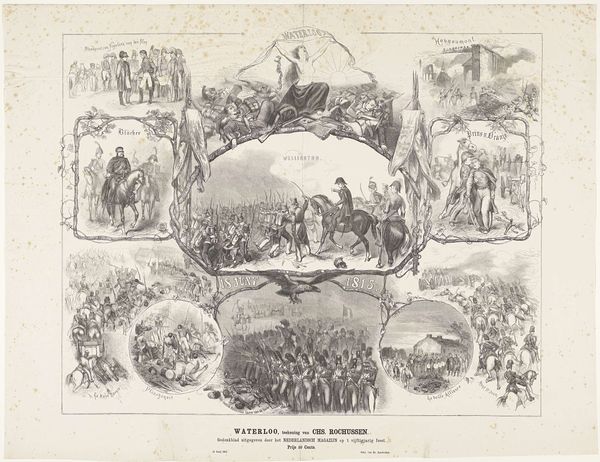
Naamlijst van de officieren in de Citadel van Antwerpen, 1830-1832 1833 - 1834
0:00
0:00
print, engraving
# print
#
pencil sketch
#
old engraving style
#
landscape
#
cityscape
#
history-painting
#
engraving
Dimensions: height 477 mm, width 572 mm
Copyright: Rijks Museum: Open Domain
Editor: So, this is “Naamlijst van de officieren in de Citadel van Antwerpen, 1830-1832,” an engraving from 1833-1834. It's essentially a list of names, but the depiction of the cityscape in the background is really striking and unsettling. It gives the list this overwhelming sense of history and conflict. What stands out to you in this piece? Curator: The first thing I notice is the potent combination of order and chaos. The ordered lists of names are framed by symbols of war, and a rather chaotic scene of battle. Note how the flags, weaponry, and the lion heraldry speak of national identity and military might, yet the backdrop is one of destruction. It is an iconographic representation of cultural trauma. How do we reconcile the honor associated with military service and sacrifice when it results in devastation? Editor: That’s interesting. It almost feels like a glorification and a critique at the same time. Like it’s trying to be celebratory, with the flags and laurel leaves, but the burning city overshadows everything. Curator: Precisely! It’s a visual paradox, deeply embedded in the cultural memory of the conflict. Think about the function of lists. They are, ostensibly, neutral. Yet, by placing this seemingly objective record within a visual narrative, it gains a potent emotional weight, forever binding those names to this specific, violent moment. What effect do you think this might have had on viewers at the time? Editor: It would probably feel very personal. It would tie their community directly to what otherwise may feel like just words and symbols. It almost feels like a war memorial, of sorts, despite its matter-of-fact layout. Curator: Yes! It transforms a bureaucratic document into a charged emblem of memory. A stark reminder that even the most seemingly objective records carry a deeply human, and culturally significant, weight. Editor: That’s definitely changed how I see the piece! I was initially focused on just the composition, but now I can appreciate how it also communicates the complexity of a pivotal time.
Comments
No comments
Be the first to comment and join the conversation on the ultimate creative platform.

